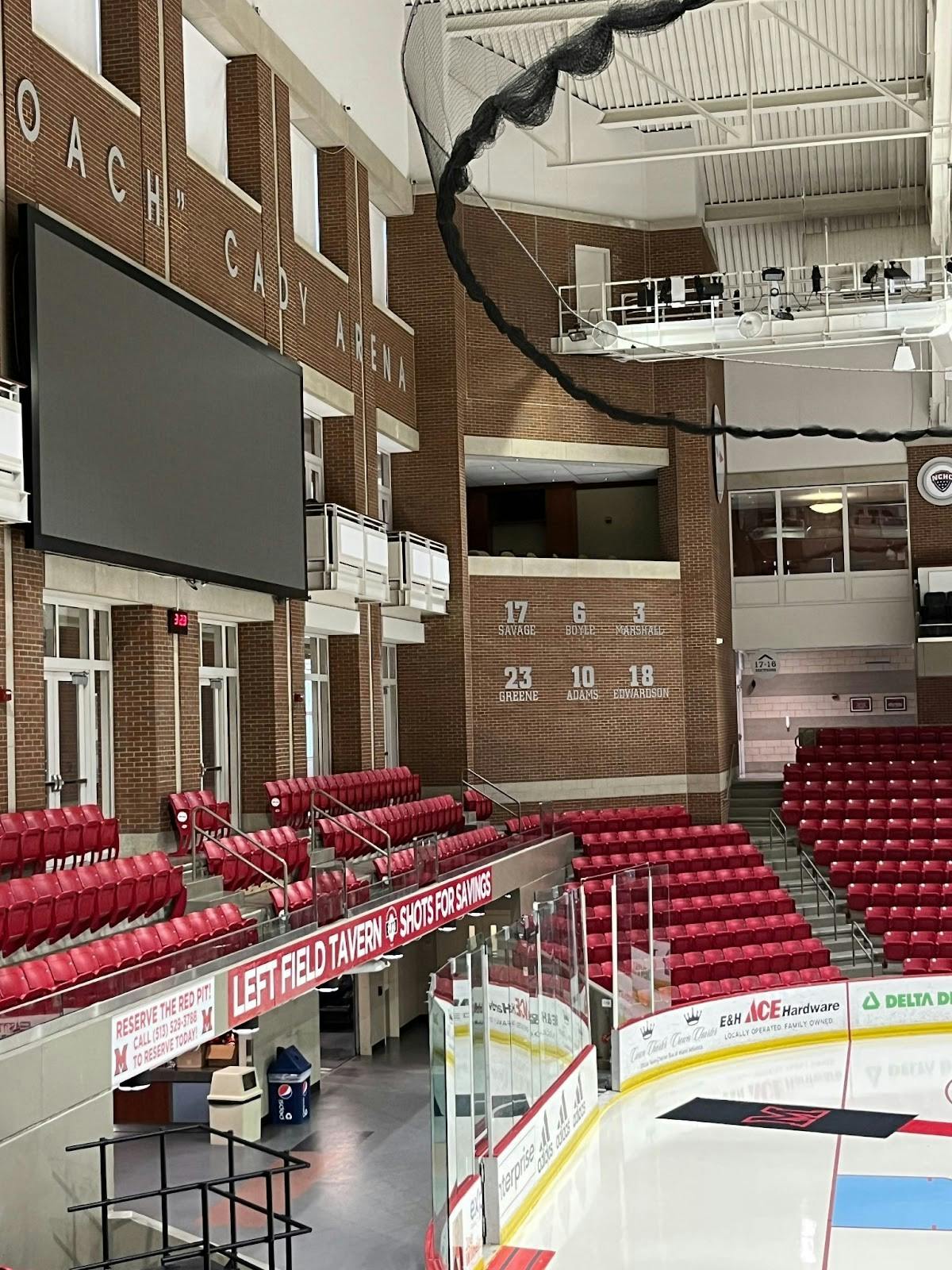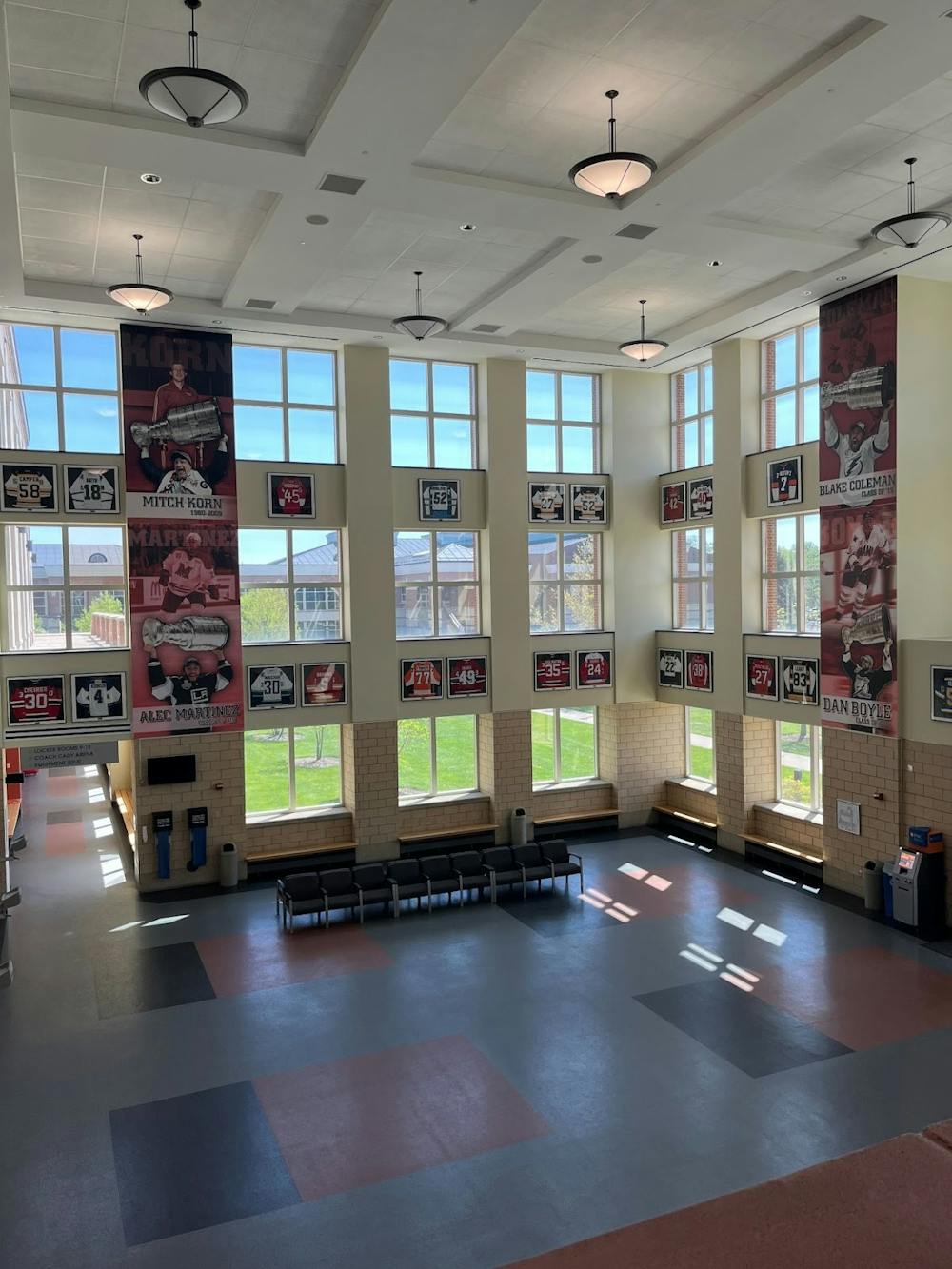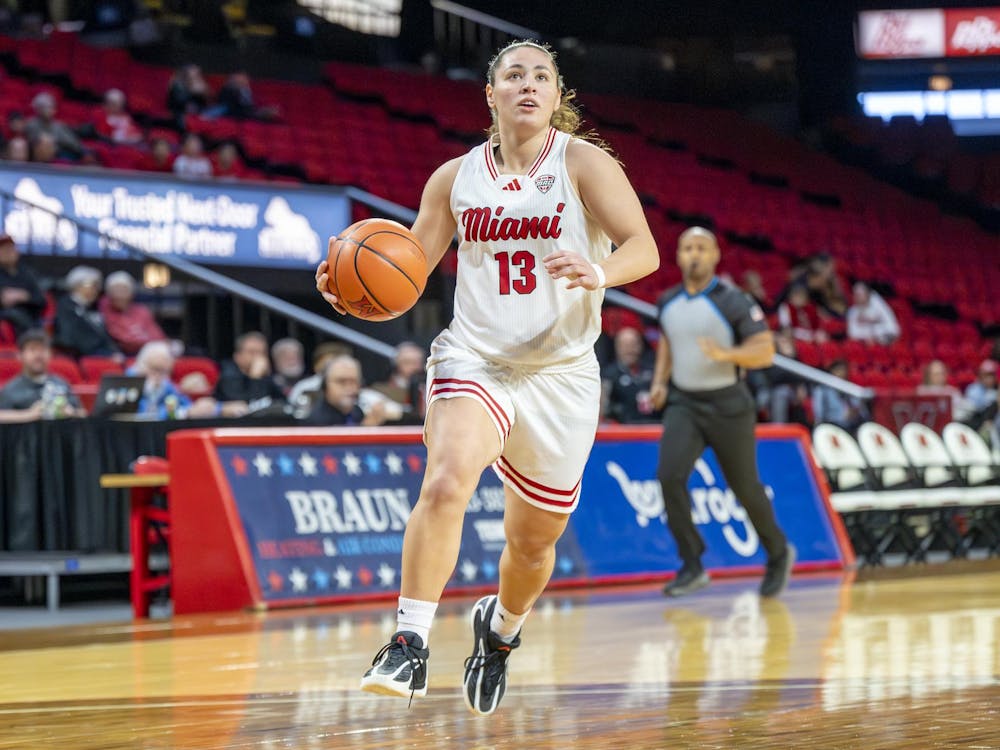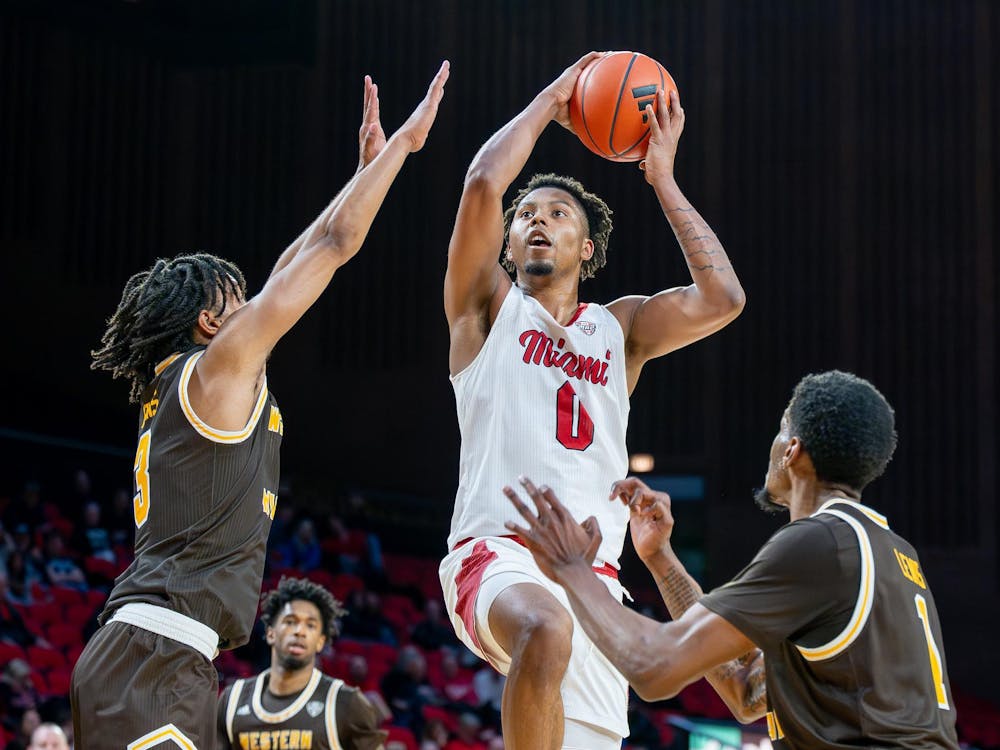“As a brother I build unity within the program. I make it clear in word and action that I can be trusted. I am unselfish and make sacrifices for the good of the team.”
This statement comes from Miami University’s hockey program mantra, known as “The Brotherhood.”
On Feb. 11, 2022, a crowd of more than 2,300 fans packed into Goggin Ice Center to watch the Miami RedHawks take on the No. 18 nationally ranked Omaha Mavericks.
Due to the game being televised on national television via CBS Sports, the Miami faithful acted even rowdier than usual. Cameras panned over to the student section causing Miami students to go ballistic. Fans screamed “SIEVE, SIEVE, SIEVE!” at the top of their lungs everytime the Maverick goalie conceded a goal.
The rambunctious crowd aided the ’Hawks to storm back from deficits of 1-0, 3-1 and 4-3 in the contest. Eventually, the game was forced into overtime. Once Hampus Rydqvist scored the game-winning goal in overtime, the fans erupted into an ear-shattering roar. Miami had earned a rare victory at the Goggin Ice Center.
These victories seem to be coming fewer and fewer. The RedHawks have not had a winning season since 2015-16, which has left fans wondering what happened to The Brotherhood’s winning ways.
Brad Elliot Schlossman, a Grand Forks Herald hockey reporter who has been covering college hockey since 2005, and John Lachmann, a 17-year Miami hockey season ticket holder and writer for View from the Glass, a blog about Miami hockey, link The Brotherhood’s struggles to weak recruiting classes and lack of confidence.
“It seems like they were getting some really impressive players in recruiting in the last few years,” Schlossman said. “When I've looked at their commitment list, they've had some good players, but it hasn't been as many as they were getting back in when things were going really well for them.”
Miami is currently tied for last in the NCHC for the number of players drafted by NHL teams, with two despite the NCHC averaging 6.75 NHL draftees per team. Schlossman doesn’t believe teams need to have a high number of NHL draftees to be successful, but Miami still isn’t recruiting the caliber of players it used to.
Schlossman said Miami plays in the best conference in college hockey, but he knows there's more to the downward slide than just being in a tough conference.
“It's not like Miami goes into non-conference play and goes 10-0 over a year either,” Schlossman said. “Do I think the NCHC plays into it? Yes. Is the NCHC the only factor in it? I don’t think so.”

On one side of Steve “Coach” Cady Arena, the numbers of Miami hockey greats are immortalized in RedHawk hockey history.
Enjoy what you're reading?
Signup for our newsletter
In the past five seasons, Miami has gone 17-26-6 in non conference play. Schlossman said it ultimately comes down to recruiting.
“What's frustrating about this class is the talent was lacking in ’21’22, ’20-’21, ’19-’20,” Lachmann said.“This year is different because the talent’s there, the freshman class was very good.”
Two first-year players, John Waldron and Max Dukovac, were top five on the team in points scored, and Axel Kumlin scored the seventh most points despite being a defenseman.
In Lachmann’s eyes, the team may lack the confidence needed to win games in the NCHC.
“It's confidence to some degree — I think they're afraid of the league schedule,” Lachmann said.
Miami has finished last or second to last in the NCHC since the 2016-17 season. Their lack of success has led some to theorize that the RedHawks’ poor performance in the NCHC stems from the coaching staff’s desire to leave the NCHC and move to the Collegiate College Hockey Association (CCHA).
“I just don't think it's the best path for Miami,” Lachmann said. “Those leagues may not exist in three years.”
Lachman said one-sport conferences, like the CCHA and NCHC, may be dissolved in upcoming years citing a statement from Miami Athletic Director, David Sayler.
'The Brotherhood'

The Goggin Ice Center contains Steve "Coach" Cady Arena, home of Miami varsity hockey.
In the glory days of The Brotherhood, fans would line up outside Goggin Ice Center in tents to get tickets to watch players such as Blake Coleman and Andy Miele. They would don the Miami red and white, and the RedHawks would grace all who viewed with a plethora of goals and highlight-reel dangles.
Despite having a historically successful hockey program, some students have noticed the downturn.
Rising Junior middle-childhood education major, Evan Kennel grew up in Oxford and always knew RedHawk hockey functioned as a big part of the community. Despite not being an avid hockey fan, he has noticed its downturn in recent years as well.
“As someone that grew up in Oxford, it was a big deal that they were good, and then they just gradually got worse,” Kennel said.
Visitors and fans entering Goggin Ice Center are greeted with numerous jerseys of former players who have gone on to play in the National Hockey League. There are also banners commending the success of the teams who made national tournament appearances and those who won conference titles.
Enrico Blasi led “The Brotherhood” in its most successful years. Blasi helped the RedHawks swoop into eight straight NCAA appearances (2005-2013) including one National runner-up performance (2009). Blasi attributes the former success of the program to its student-athletes and the culture of brotherhood.
“Our culture, the way we held each other accountable, daily behaviors and our team dynamics were extremely high and guys respected each other's differences, understood the process,” Blasi said. “Our relationships were really important to every member of the program.”
Blasi believes all who played for The Brotherhood found success on and off the ice. But players like Miele went above and beyond to live out the mantra.
“They're always pushing each other, pushing themselves to be better,” Blasi said. “[Coleman and Miele] were the hardest working guys on our team.”




